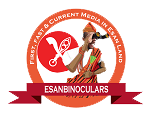The National Bureau of Statistics (NBS) has said that over 133 million people representing 63% of the Nigerian population are multidimensionally poor.
This is according to the agency’s 2022 National Multidimensional Poverty Index Report released on Thursday.
The report also states that the country’s Multidimensional Poverty Index (MPI) stands at 0.257, showing that poor people in Nigeria experience just over one-quarter of all possible deprivations.
“Over half of the population who are multidimensionally poor cook with dung, wood or charcoal, rather than clearer energy. High deprivations are also apparent in sanitation, time to healthcare, food, insecurity, and housing,” the report noted.
The report also pointed out that multidimensional poverty is higher in rural areas where 72% of people are poor, compared to 42% of people in urban areas. Approximately 70% of Nigeria’s population live in rural areas, yet the intensity of rural poverty is also higher: 42% in rural areas compared to 37% in urban areas.
It also added that 65% of poor people – 86 million – live in the North while 35% – nearly 47 million – live in the south while poverty levels across states vary significantly, with the proportion of the population (incidence) living in multidimensional poverty ranging from a low of 27% in Ondo to a high of 91% in Sokoto.
The report also listed the poorest of states to include Sokoto, Bayelsa, Jigawa, Kebbi, Gombe and Yobe using the proportion of poor people as well as the intensity of their poverty.
The NBS noted that the Nigeria MPI (2022) survey was conducted across the 109 senatorial districts, establishing a baseline for the local government area (LGA) survey due in 2023, and future two-yearly national surveys.











































